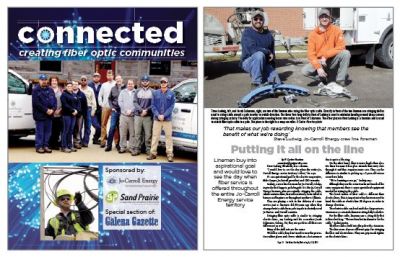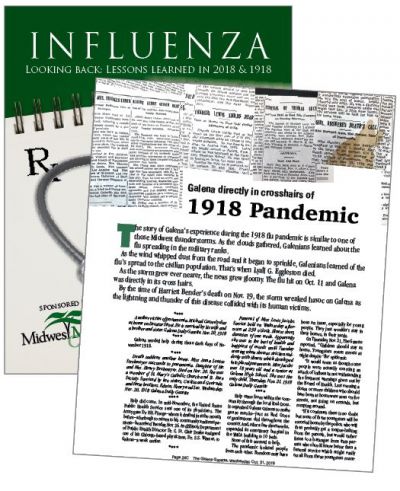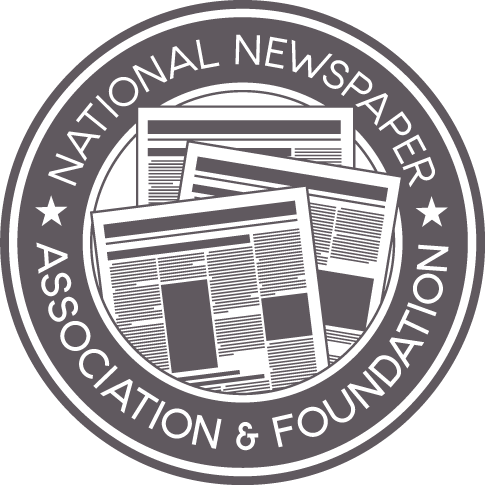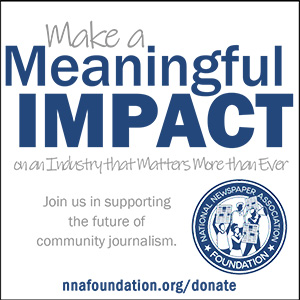While in Milwaukee, get the flu or broadband
Jay Dickerson
Sep 1, 2019



When Presidential candidate Theodore Roosevelt visited Milwaukee in 1912, he didn’t have a positive experience. Right before a campaign speech at the Gilpatrick Hotel, a crazed saloonkeeper named John Schrank shot him at close range.
Security apprehended Schrank. Roosevelt still delivered his speech. At one point, Roosevelt reportedly said, “It takes more than one bullet to kill a Bull Moose.”
Roosevelt was wearing a heavy outer coat, a heavy suit coat and a vest. Also credited with slowing the bullet and saving his life: the pages of his speech for the evening, folded over, as well as his glasses case. Roosevelt was lucky. The old Midwestern adage of wearing layers in the cold just might have saved his life.
Newspapers can take an example from Roosevelt’s hardiness. In a time where trust in media is eroding, newspapers need to be ready for almost anything.
Here are two projects your paper might be able to implement. These two projects are atypical of the standard multi-advertiser special sections that boost the bottom lines of newspapers. But these projects show the value and power of print media to inform the public and provide a necessary role in the community. These projects are as valuable as layers on a cold, Midwestern day.
INFLUENZA
We gave people the flu last year.
“Influenza: Lessons Learned in 2018 and 2019” was a special section that featured stories commemorating the influenza outbreak of 1918, plus the efforts in modern times to prepare for the flu. The section featured stories and photos from medical personnel from the local hospital. We also included feature stories from our deep archives on the 1918 flu.
The hospital’s portion of the publication included information on how to get a flu shot. It also allowed us to present the information in graphics and bullet points. Some of those influenza facts:
- It takes two weeks for the vaccine to build antibodies to provide protection from the flu.
- The flu shot will be effective for 152-180 days.
- A 2018 study showed that from 2012 to 2015, flu vaccination among adults reduced the risk of being admitted to an intensive care unit with flu by 82%.
Several pages of the section included stories of soldiers overseas in World War I and the conditions they faced. We had historic photos; we scanned old issues of the paper and ran the headlines.
The hospital funded the project, paying for printing and advertising space.
BROADBAND
In our county, when the rural areas received electricity, it enhanced the quality of lives and provided opportunity. The efforts to provide high-speed internet options throughout rural America are the same sides of a different coin.
The local electric co-op was the sponsor and only advertiser in a special section that educated readers on bringing broadband to this section of northwest Illinois.
There is one community in the county — the same community where the co-op’s headquarters is located — that’s 100% broadband. Our stories included conversations with business owners in that community and the benefits of broadband. We included a glossary of broadband terms. We also featured stories of lineworkers and community leaders, each pushing for broadband.
Just like rural electrification revolutionized the county in the 1930s, broadband will do the same today.
THE BOTTOM LINE
These two special sections are niche projects that only newspapers can do. Both projects rely on strong business relationships that build and develop over time. The projects inform the public and tell the stories that only newspapers can tell.
Both the hospital and the electric co-op paid premiums for this. Their ad dollars generated considerable revenue. These were new projects that didn’t replace others but added to our bottom line.
The National Newspaper Association (NNA)’s annual convention comes to Milwaukee in October. I will be facilitating a flash session with each of these projects and going into greater detail on other special sections. If you haven’t registered yet, visit nnaweb.org/convention.
Here’s hoping your visit to Milwaukee in October goes better than Roosevelt’s.
Jay Dickerson is the advertising manager of The Galena (Illinois) Gazette. He’ll be getting his flu shot this year. He will be presenting Flash Sessions at the NNA Annual Convention & Trade Show in Milwaukee, Wisconsin, on Friday, Oct. 4. See Page 15 for more information.






